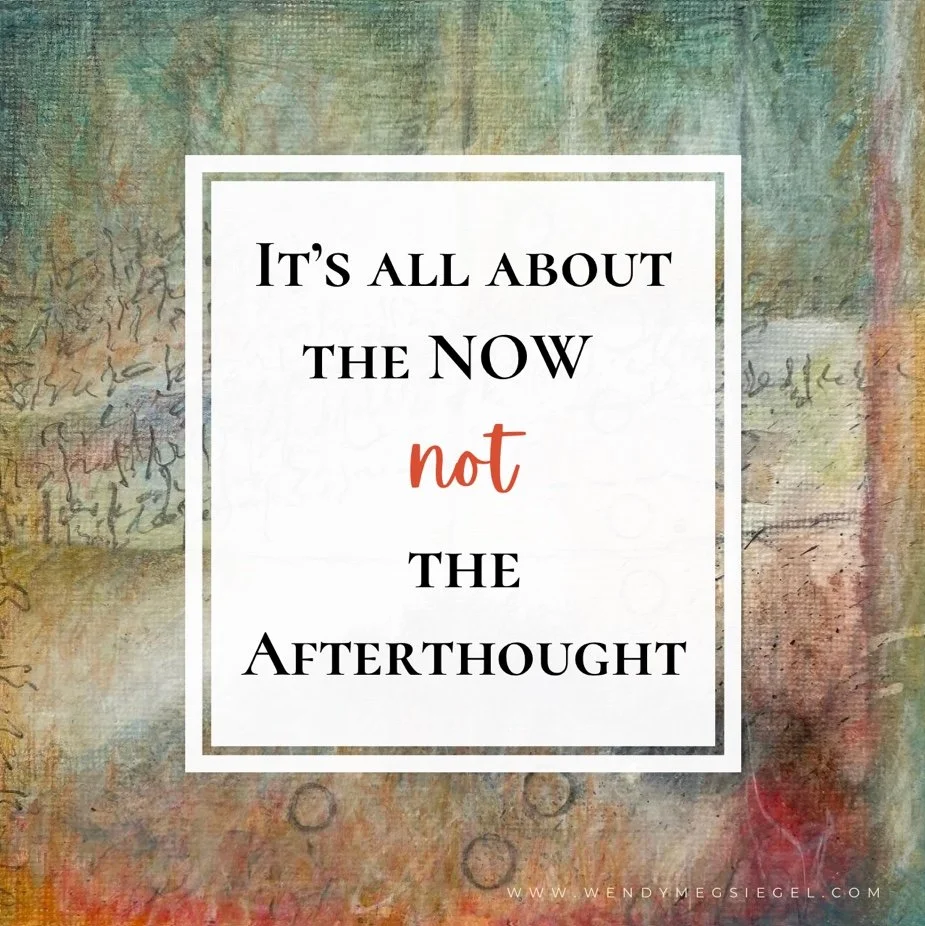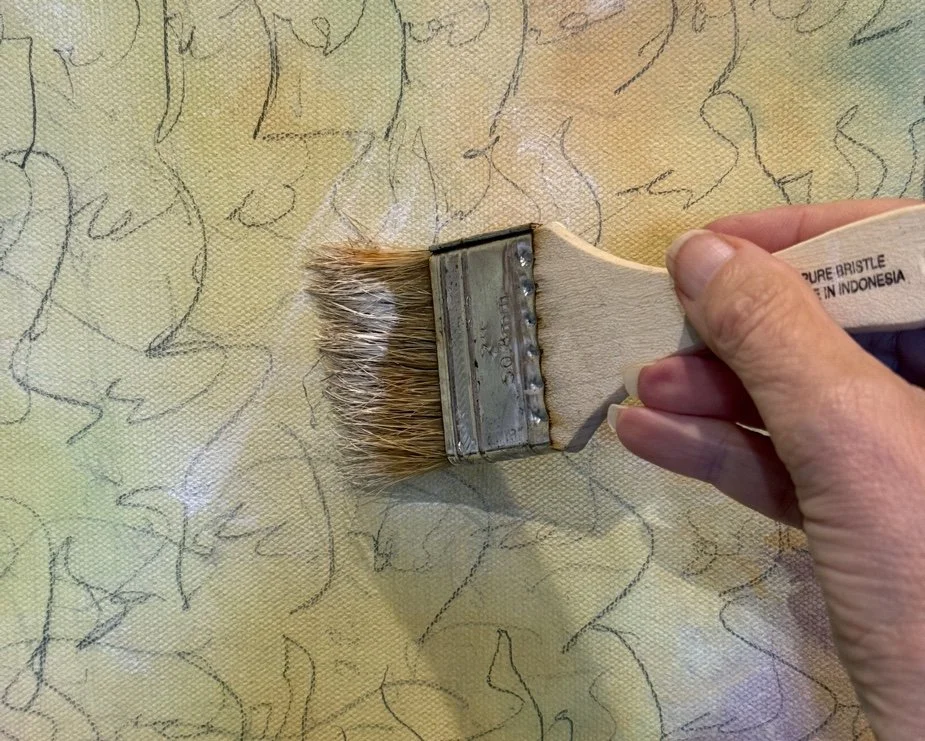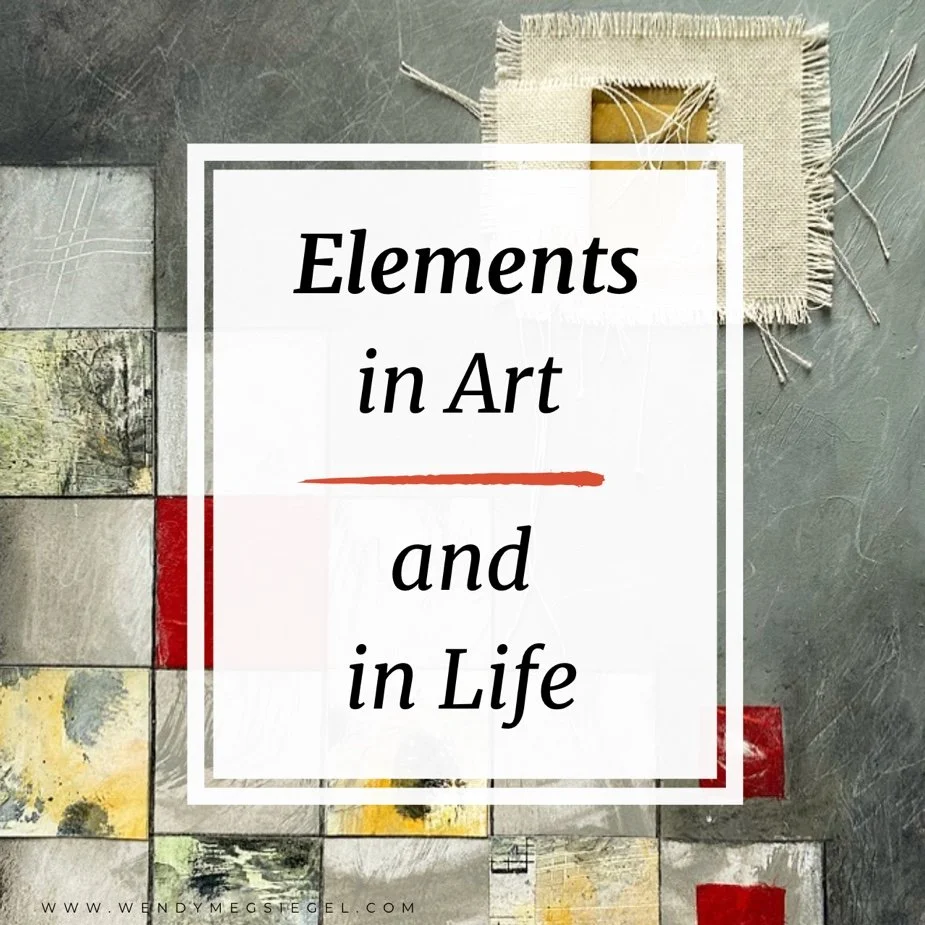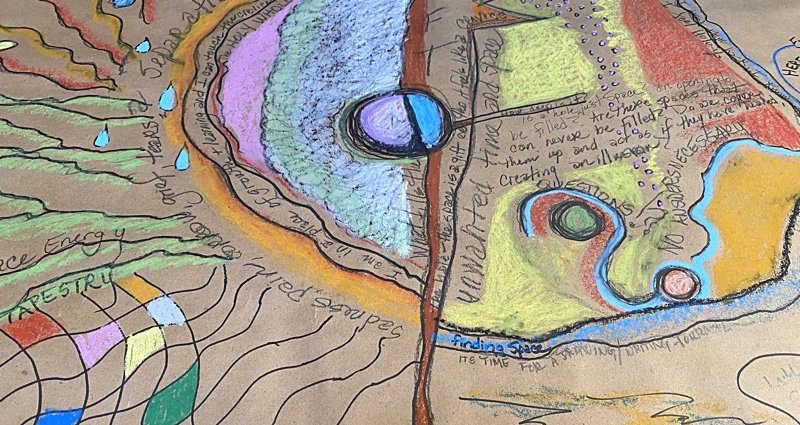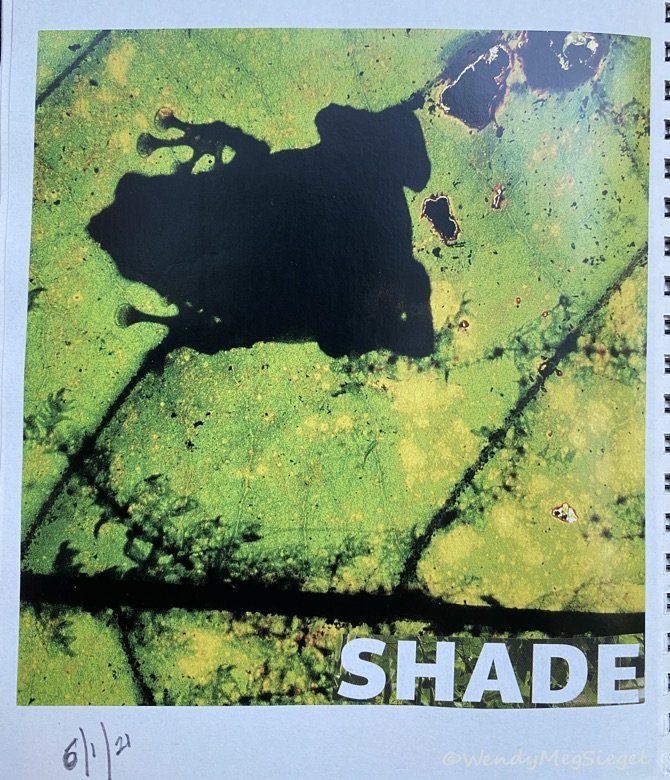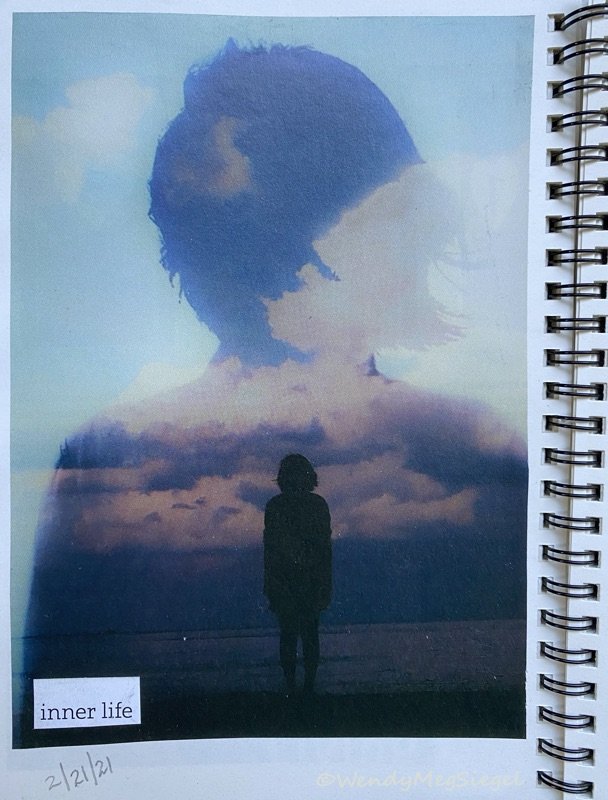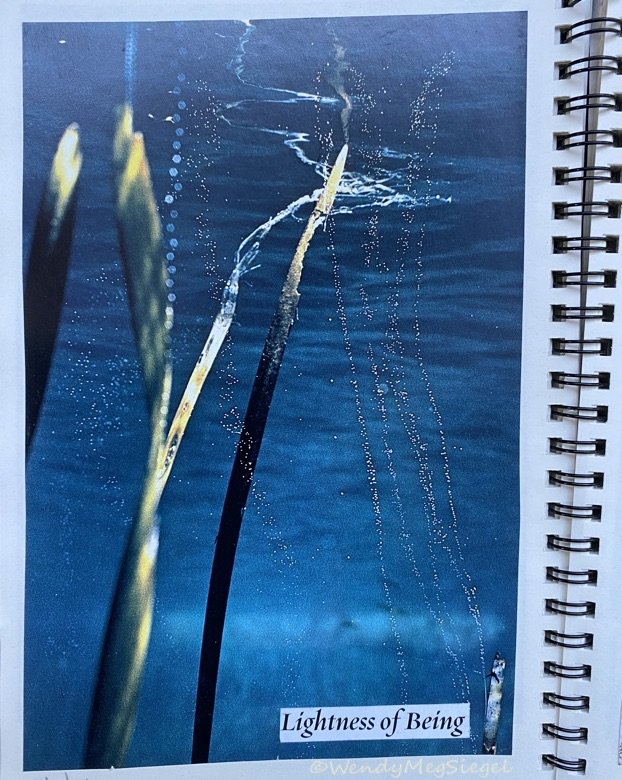Recently, I spent a few hours returning to a painting in process. As I began, I was aware of feeling good about it’s current state of being and also a clarity that the work was incomplete. I had an idea of how it could be developed. So, I played with color and paint, made the changes that were calling to me. One area at a time, one color at a time, one brush stroke at a time, applying paint and moving color around as I like. I was in the flow, I was experiencing each moment. AND that is what it’s all about. I was there with the colors and the paint. And the minutes and hours flew by.
It’s in the experience of the creative process where the magic happens.
When I was about to walk away, I was aware that I thought less of the canvas than when I began just hours before. And rather than feeling disappointed in my efforts, I was immediately lit up by the idea that I get to keep playing with this canvas and seeing where it goes next. So, why am I sharing this experience with you?
Because the next morning I got in my head and my thoughts traveled to other places: “Did I ruin it?” “How can I possibly make it work now that I made those changes?” “I wish I could erase the changes in order to get it back to where it was yesterday.”
But here’s the thing… I was in the moment while painting. That morning, my thoughts were in the past and in the future, not in the presence of what was before me. I was not present here and now. The beauty of creating anything is how the process draws us into the present moment. We flow from moment to moment, engaged in something that makes time seem to become nonexistent. That presence in action can be a magical portal to something other than our everyday existence. It transports us into being right Here and Now.
It’s easy to second guess ourselves after the fact, but spending time and energy on the past doesn’t do anything to support us. That was then and this is NOW.
For me, years of experience as an artist have taught me to trust my ability to move almost any canvas to something I can feel good about in the end. Every step perceived as a misstep, is an opportunity. It is an opportunity to learn something new and take a painting in an unexpected direction.
That being said… my trust, knowing, and experience does not stop my thoughts from going to unhelpful places at times.
Notice your thoughts. Are they re-litigating the past? Are they bringing up future concerns? What creative activity would you love to immerse yourself in to experience the here and now?
You may also be interested in:

